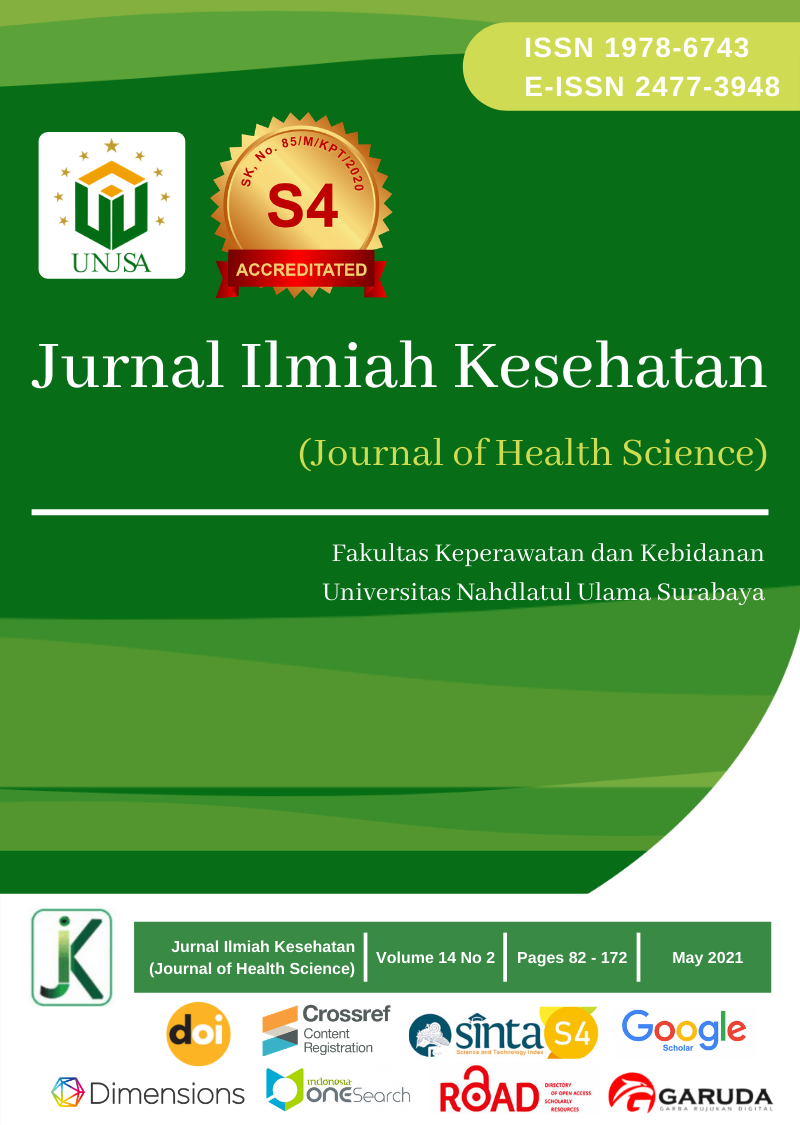The The Length Of Stay In Patients Undergoing Diagnostic MRI And CT-Scan With Intravenous Anesthesia At Outpatient Clinic Dr. Soetomo General Hospital: An Overview
Main Article Content
Abstract
Background: Magnetic Resonance Imaging (MRI) and Computerized Tomography (CT) Scans might be challenging for children or patients with anxiety or claustrophobia. The use of general anesthesia aims to increase the success rate, but inadequate management can result in longer length of stay. Purpose: To analyze patients' length of stay on MRI and CT-scan with intravenous anesthesia. Methods: A descriptive observational study. The datas were collected retrospectively from the medical records in General Diagnostic Center. Total of 721 patients who underwent MRI or CT Scan procedures with intravenous anesthesia during 2017-2018. The data obtained were patients' age, sex, the type of procedure, physical status, comorbid, type of anesthesia drug, diagnostic procedure duration, length of observation in the Post Anesthesia Care Unit (PACU), and overall length of stay. Results: All MRI procedures used midazolam-propofol combination, and only one CT scan procedure used this combination, while the other used only propofol. Patients undergoing MRI had length of stay with a mean duration of 6,6,3±1,26 hours, compared to CT scans with 5,20 ±1,38 hours, due to the more prolonged procedure and observation duration in the PACU. Conclusion: Patients undergoing MRI had a longer length of stay than the ones doing CT scans.
Downloads
Article Details
Copyright (c) 1970 Virda Maharani, Arie Utariani, Lucky Andriyanto, Bambang Harjono

This work is licensed under a Creative Commons Attribution-ShareAlike 4.0 International License.
References
Bailey, MA, A. Sarawastula, and L. Softley. 2016. “Paediatric Sedation for Imaging Is Safe and Effective in a District General Hospital.” British Journal of Radiology 89(1061).
Choi, J. W., D. K. Kim, S. H. Lee, H. S. Shin, and B. G. Seong. 2018. “Comparison of Safety Profiles between Non-Operating Room Anesthesia and Operating Room Anesthesia: A Study of 199,764 Cases at a Korean Tertiary Hospital.” J Korean Med Sci 33(28):183.
Dasgupta, A., S. Dasgupta, Supratik Sen, Sukanta Sen, and Girish Kishore Sinha. 2017. “Bezodiazepine Hypnotics as Oral Preanaesthethic Medication: Comparative Clinical Study.” International Surgery Journal 4(1):304–12.
Kang, R., Y. Shin, N. Gil, K. Kim, H. Yeo, and J. Jeong. 2017. “A Comparison of the Use of Propofol Alone and Propofol with Midazolam for Pediatric Magnetic Resonance Imaging Sedation – a Retrospective Cohort Study.” BMC Anesthesiology 17(1).
Largo-pineda, Carlos Eriel, Iván Darío Arenas-correa, Gabriel Jaime Ángel-gonzález, Jorge Mario Vélez-arango, Victor Daniel Calvo-betancur, and Andrés Nahúm Arango-zapata. 2017. “Adverse Events in Paediatric Patients Taken to Magnetic Resonance Imaging under Sedation or Anaesthesia.” Colombian Journal of Anesthesiology 45(1):8–14.
Lee, HJ. 2017. “Anesthesia for Ambulatory Surgery.” Korean Journal of Anesthesiology 70(4):398–406.
Makwana, D. S., N. Parmar, and K. Prem. 2016. “Discharge Criteria and Complications After Day Care Surgery.” Asian Pac J. Health Sci 3:82–88.
Mujiburrahman. 2017. “Analisa Lama Tinggal Pasien Rawat Jalan Setelah Tindakan Diagnostik Dengan Anestesi Umum RSUD Dr. Soetomo.” Fakultas Kedokteran Universitas Airlangga.
Rubin, D. 2014. “Anesthesia for Ambulatory Diagnostic and Therapeutic Radiology Procedures.” Anesthesiology Clin 32:371–380.
Shetty, A. and US. Raveendra. 2015. “Anesthesia For Day Care Surgery.” Nitte University Journal of Health Science 5:2249–7110.
Verhage, J., C. J. Mulders, and F. L. Willekens. 2003. “Intravenous Midazolam Sedation in Pediatric Diagnostic Upper Digestive Endoscopy: A Prospective Study in a General Hospital.” Romanian Journal of Gastroenterology 12(4):273–76.





